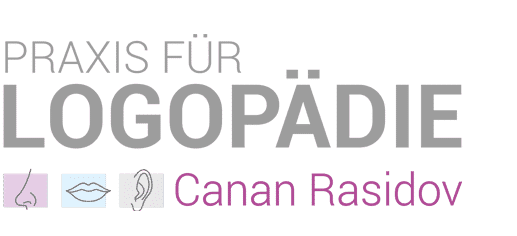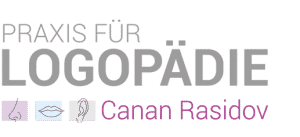Services
Speech therapy is the treatment of voice, speech, speech and swallowing disorders in childhood, adolescence
and adulthood.
It includes both counselling, diagnostics and individual therapy.
Services for children and adolescents
Trouble pictures speech therapy in children and adolescents
- language development delay
- Dysgrammatism (grammar disorder)
- Auditory or visual perception disorders
- Reading and spelling weakness (LRS)
- Stuttering / stuttering
- Voice disorders
- eating and swallowing disorders
- Cleft lip, jaw and palate
- Speech disorders with impaired hearing
- Speech disorders in developmental disabilities or disabilities
- mutism
- autism
Services for adults
Trouble pictures speech therapy in adults
- Aphasia e.B. speech loss after stroke
- Speech apraxia disturbance of speech movement
- Dysarthria and dysarthrophonia Disorder of speech / voice due to neurological diseases
- dysphagia
- Mysofunctional disorder Muscle weakness in the mouth area
- Stuttering / stuttering
- Laryngectomy larynx removal
- voice disorders
- Facial paralysis Facialis paresis
- Speech disorders in developmental disabilities or disabilities
- coma
- tracheostomy tube management

Language development delays in children
Language development delays in children
Language development delays or disturbances (SEV/SES) are speech and speech abnormalities that occur in the course of child development.
Features of a language development delay (SEV/SES)
- restricted active and passive vocabulary
- Disorder of articulation
- restricted understanding of language
- Disruption of the auditory distinction of sounds
- weak tongue and lip muscles
- Disruption of grammar
A distinction is made between a specific and general language development disorder:
Specific language development delay
A specific language development disorder occurs when the child’s language development is disturbed either at one linguistic level, at several or even at all levels.
- Disruption of the level of pronunciation (dyslelia)
- Disturbing the level of word meaning and vocabulary of speech comprehension disorder)
- Disorder of the level of grammar (dysgramatism)
- Disruption of the level of communication (communication disruption)
General speech development disorder
A general speech development disorder occurs when speech development is caused by a primary impairment.
for instance:
- Early childhood brain damage
- Peripheral and central hearing disorders
- Multiple disabilities
The following areas are observed and checked in diagnostics:
- vocabulary
- articulation
- Language comprehension Strength and coordination of lip and tongue muscles
- Grammatical Skills
- Auditive perception
- Visual perception
Reading and spelling weakness (LRS) in children
- motor skills
- visual perception
- of auditory perception
- memory and retrieval capabilities
- of phonological awareness
- of general linguistic skills
It is a disturbance of partial functions of the central nervous system, in which the transmission of acoustic and/or visual stimuli to the brain works only to a limited extent. Restricted hearing and vision as a cause of the problems of learning to read and write must be excluded by medical examinations.


Voice disorders in adults, children and adolescents
In our practice, we offer you the diagnosis and therapy of every voice disorder.
The voice is an essential element of human communication – if the voice is sick, personal expression often suffers from it.
Disturbance of the singing voice
In our practice, the diagnosis and therapy of the singing voice is aimed in particular at professional singers, as well as committed amateur or choral singers of all styles (e.B.klassik, Pop, Rock, Jazz). The (re-)acquisition and deeper getting to know one’s own voice, as well as a permanently stable performance of the voice in everyday life, are the main therapeutic goal. Together, the therapist and patient work out the functional rehabilitation of the disturbed voice, as well as its permanent transfer into everyday life, based, among other things, on medical and psychological foundations. The individuality of the personal and artistic orientations are given special consideration throughout the therapy.
Contents of the voice therapy are (depending on the pattern of the disorder):
Perception, breathing, voice (voice, singing voice), relaxation exercises, articulation/resonance, posture, person/intention, anatomy, speaker drawing/voice formation.
Do they feel like they have a voice disorder?
Possible symptoms of this include:
-the voice sounds rough, hoarse or breathy,
-their professional or private environment believes that their voice has changed,
-frequent lumping sensation in the neck,
-the sound of the voice has changed,
-feeling of exertion when or after speaking,
-changed, in most its inertly, limited performance
The earlier they start voice therapy, the better – because functional disorders can lead to changes in the vocal lips, which sometimes need to be surgically removed (e.B. Reincke-Ödeme, hard vocal nodules.).
Let us help you – we look forward to seeing you!
Aphasia e.B. speech loss after stroke
Aphasia is a central speech and communication disorder due to acquired brain damage in the speech-dominant cerebral hemisphere after completion of language acquisition.
These are caused by.B strokes, accidents, brain haemorrhage and brain tumors.
The aphasic disorders can extend to all expressive and receptive linguistic modalities (speaking, understanding, reading and writing).


Speech apraxia
Speech apraxia is a disorder in the execution of individual movements or of motion sequences in the speech sequence as a result of brain damage.
The impairment consists in the planning or programming of motor activities with the usually intact function of the functional circuits involved in speaking.
Often aphasia and speech apraxia occur together. In rare cases, apraxia can also occur in isolation.
The symptoms of speech apraxia are expressed, for example, by sound malformations, search movements, speech effort, co-movements, attempts at self-correction, speech pauses, stretches and omissions.
Dysarthria
Dysarthria is an acquired neurogenic speech disorder caused by damage to the central or peripheral nervous system.
The impairment is reflected in the control and execution of speech movements. In the areas of breathing, phonation, articulation, resonance and prosodie, problems can therefore arise. In the case of severe disturbances, there may be a complete incomprehensibility of speaking.
Neurological diseases such as .B Parkinson’s disease, Chorea Huntington, Chorea Sydenham, multiple sclerosis, skull-brain trauma and stroke can be considered as the cause of dysarthria.


